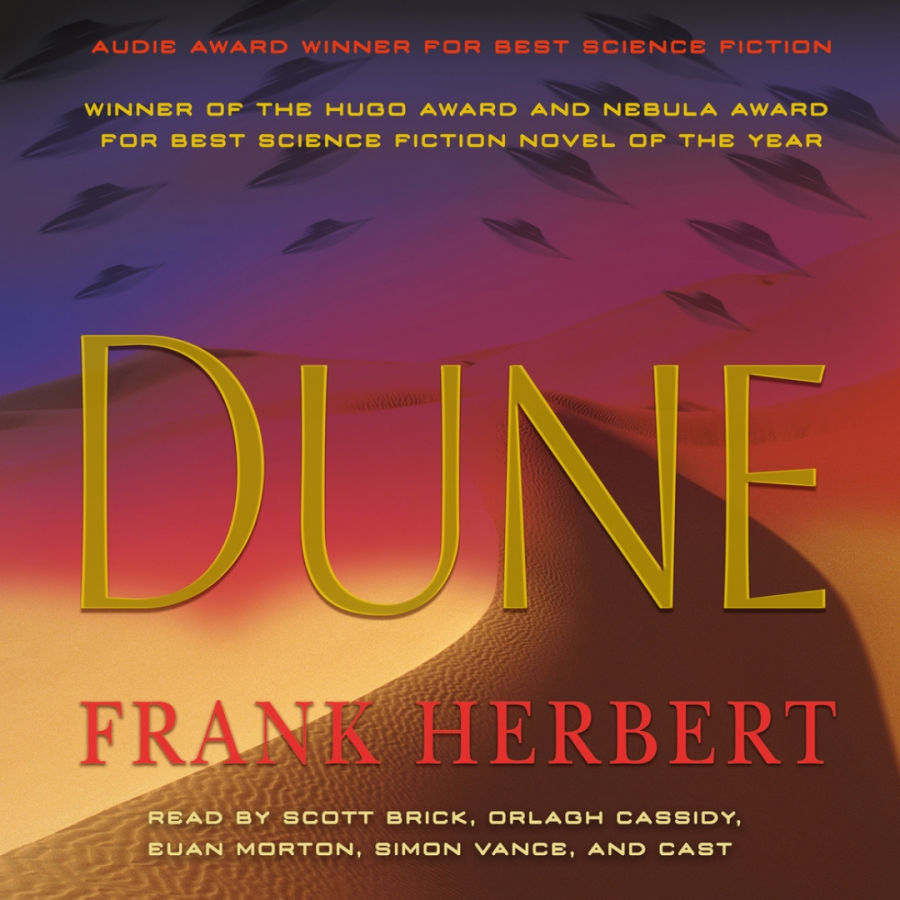‘Dune’ immerses readers into unique sci-fi world
Author Frank Herbert’s classic science fiction novel “Dune” has experienced a resurgence in popularity with the upcoming release of a new film adaptation in Oct. 2021. Originally published in 1965, it is the first book in a series of six.
“Dune” is set in a universe where hundreds of planets are encapsulated by a vast empire. Each of these planets is controlled by one of the noble families, who compete with each other for power under the emperor.
The story follows Paul Atreides, the heir of House Atreides, one of these noble families. At the beginning of the novel, his father was just ordered by the emperor to become the ruler of a desert planet called Arrakis, more commonly known as Dune.
Arrakis has an exceptionally harsh climate that makes it a difficult place to live. However, Arrakis is an incredibly important planet, as it is the only place in the universe that produces a treasured drug called melange.
Nicknamed “The Spice,” the substance is the most precious item in the universe for its life-extending properties and its ability to make efficient space travel possible by enhancing the vision of space navigators. However, melange is highly addictive and turns the eyes completely blue. It is also very expensive, which grants immense power to those who control it.
Before House Atreides took over Arrakis, it was ruled by their enemies, the evil House Harkonnen, who had no intention of giving up such a valuable planet. Soon, Paul finds himself in the middle of a dangerous and treacherous plot against his father by House Harkonnen and the emperor.
All the while, it is clear from the beginning that Paul possesses extraordinary abilities, and a special destiny awaits him on Arrakis.
The universe of “Dune” is a stunning combination of imagination and reality that could easily exist in a future civilization.
The book’s setting has a rare ability to captivate the imagination of the reader. With its vast expanses of sand dunes, plus its gigantic sandworms that move through sand like fish in water, the desert planet stirs up wonder.
One of the most interesting features of this book is its unique structure. Each chapter opens with an excerpt from a future biography written about Paul. These excerpts are often illuminating and usually provide insight into what will occur over the course of the chapter.
Also, the narrative frequently switches between different characters, which is disorienting at first but eventually aids in understanding. Though the story is focused on Paul, the author changes which character’s thoughts the readers can see, often many times in a chapter. There is a wide variety of different characters that contribute to the story.
In the beginning, the reader is thrown into a complex universe that is difficult to understand due to unfamiliar words and concepts. To alleviate confusion, readers can rely on a section at the back of the book titled “terminology of the imperium” to understand the unfamiliar words and concepts. Without it, the complexity of the book can easily create frustration.
The story is exceptionally detailed, though it can be read on many levels, with the heroic journey of Paul Atreides being the simplest. Readers can also examine the layers of politics, economics, religion, ecology, and philosophy that Herbert wove into his book.
One of the most fascinating parts of the story is the extreme value of water on Arrakis. The people who live in the desert, called Fremen, consider water sacred, and they devote themselves to preserving it to ensure there is enough for all. On the desert planet, water is also a form of money and power.
The pacing is fairly consistent and suitable for the book. The story takes place over several years as readers get to witness the development of the characters, especially Paul Atreides, who is 15 years old at the onset of the epic.
The plot, broken up into three sections, is exciting and has the capability to completely absorb readers, leaving them staying up late at night as they race to reach the conclusion. “Dune” is one of the rare books that draws fans back to read it multiple times and allows them to find something new on each occasion.
Though it is easy to see why the book is one of the most popular and beloved novels ever written, it is not for everyone. The length and complexity of “Dune” make it difficult to read.
However, it is absolutely perfect for dedicated readers, especially fans of science fiction. A reader willing to commit the time and effort to finish “Dune” could very well end up considering it to be a favorite. Overall, it is a stunning work of literature.

Ben is a senior in his third year of writing for the Cavalier Chronicle and his second as an editor. His love for writing led him to join the staff, and...







